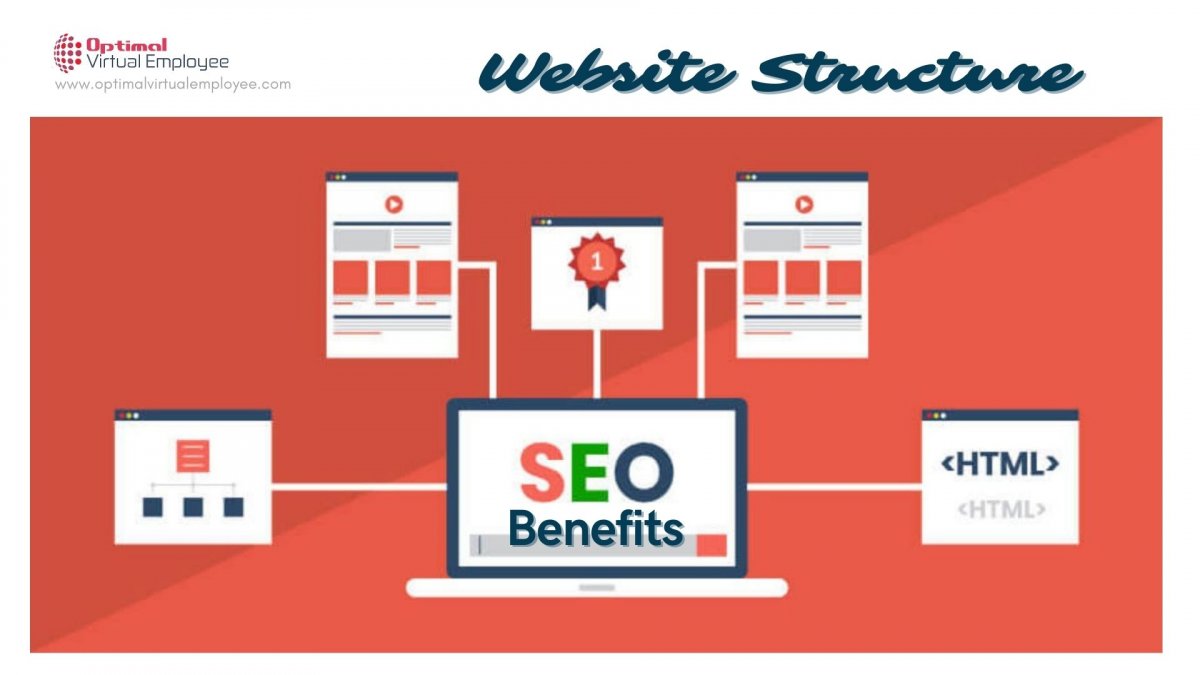The website structure defines SEO performance, yet many website owners and web developers tend to overlook it. The more functional and appealing your website is to the viewers, the higher the browser places it in the search engine rankings.
The importance of website structure resonates in the fact that users enjoy enhanced discoverability on the website thanks to its well-planned structure. With a well-laid-out website structure, websites are more comprehensible, and the patterns are more predictable for the users. Web visitors appreciate how they can find what they are looking for easily when a website has a relatable structure.
Web developers can ace usability and UI design through proper website structuring. Implementing Search Engine Optimization techniques during web development can drive more traffic to the website and increase the number of potential customers. Moreover, better website structure appeals to web crawlers like Googlebot and makes it easier for them to index the website’s content and return it in search results. The structure of a website must be properly optimized for human users and robots, and here are some tips for web developers to help get them started.
How to Choose a Website Layout?
The choice of website layout should be such that it simplifies grouping and categorizing content. Going by the textbook approach, web developers either choose the top-down or bottom-up approach. The choice of layout also depends on the needs of the client businesses:
1 ) Top-Down Way
This way prioritizes general category content allowing web designers to divide the content into categories to enhance the hierarchy of the website.
2) Bottom-Up Way
The other way around is to follow the bottom-up approach by allowing web developers to create a website structure on the basis of the content available by element grouping from lower to higher.
What Does an Ideal Website Structure Look Like?
Web developers often opt for favorable site structures while building new websites depending on their clients’ specific needs. In an ideal case scenario, a website structure will resemble a triangle, with the home page being at its top followed by categories, subcategories, and individual pages. While the homepage is the common stop for all website visitors, it’s best linked to the website’s crucial web pages to provide more visibility to them.
Categorization facilitates decision-making for website visitors. As for subcategories, they enhance the browsing experience for visitors and relevance to it, more importantly where there is a lot of data involved. Even the individual posts and pages are added to create a meaningful information hierarchy within web pages and enhance the overall UX.
Types of Website Structures
Majorly speaking, website structures range into four types. In-Depth understanding of website structures during web development help with website design. Here, we shed light on them:
1) Hierarchical Model
In this type of model, the website structure is divided into various subcategories.
2) Sequential Model
Here the users are led through the webpages in a sequential manner. For example, sign up, onboarding, and then final checkout. Web developers can work towards creating intuitive flows with this model.
3) Matrix Model
This is the most common type of structural model used by web developers. It features a matrix-like structure that gives web visitors ample choice in terms of the way they want to proceed on the website.
4) Database Model
Database Model is an innovative way of building the website structure using the bottom-up approach. Web developers keep the metadata and information structure in mind to be successful with database models.
Ways for Building Proper Website Structure to Gain SEO Benefits
Here are some of the most essential and crucial practices in HTML that can benefit web developers to optimize their web development to the terms of SEO and drive in more traffic.
- Sitelinks is a listing format shown in SERPs that shows the website’s main page and shows several internal links along with it. This gives a great SEO advantage to such website owners as it increases navigability in their website and thus increases traffic and decreases conversion rates.
- The URL structure should follow your website’s hierarchy and contain adequate keyword coverage, not random numbers and symbols.
- To make a well-structured URL, make sure that users can read what is written in your URL and have a clear idea of what the page they are about to visit is about.
In The End
Site structuring is a crucial element of the web development process and must be done through careful thinking and proper organization. Placing the end user’s needs on priority, web developers can build UX design that facilitates user’s experience. These tips can help developers build a better website structure and thus improve its structural SEO. Using these tips during web development, web designers can infuse intuitiveness into how users navigate through the website.
Alos Read:









